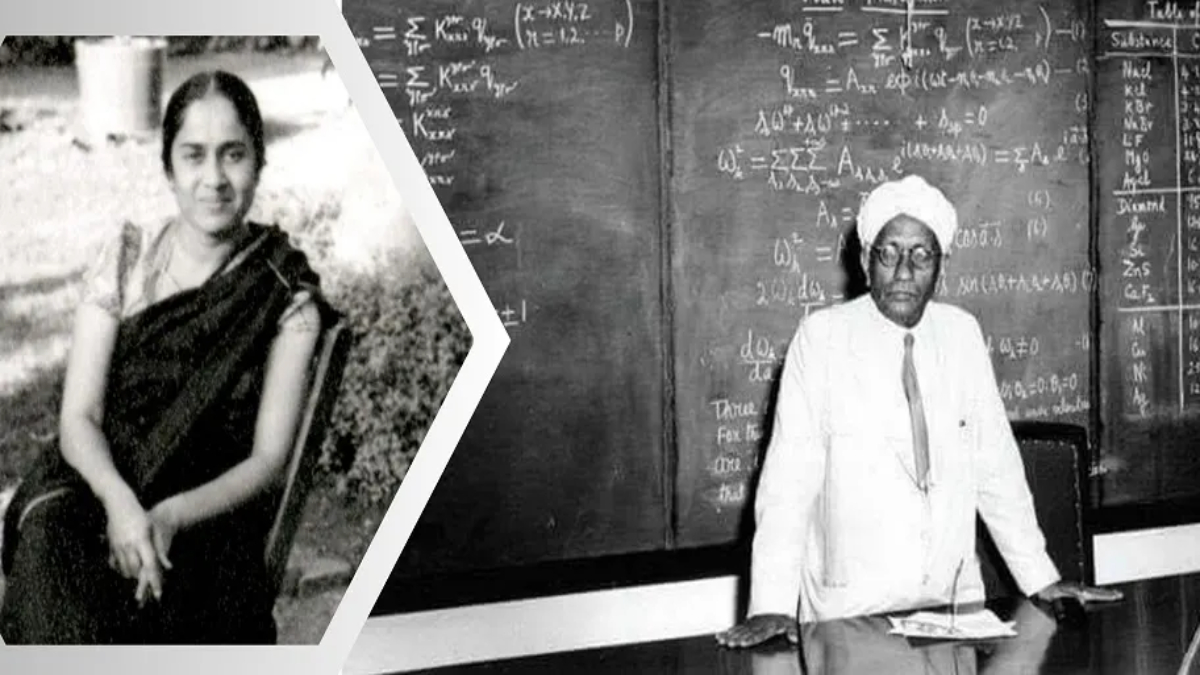Now Reading: Kamala Sohonie: The Quiet Rebel Who Forced Open the Doors of Indian Science
-
01
Kamala Sohonie: The Quiet Rebel Who Forced Open the Doors of Indian Science
Kamala Sohonie: The Quiet Rebel Who Forced Open the Doors of Indian Science

The year was 1933. In a time when the world of high science was almost exclusively a men’s club, Kamala Sohonie (then Kamala Bhagvat) graduated from Bombay University, topping her class in Chemistry and Physics. Her next logical step was to pursue research at the prestigious Indian Institute of Science (IISc) in Bangalore, an institution considered the holy grail of scientific education in the country. What happened next, however, was a direct confrontation with the prevailing patriarchy, personified by the institute’s director: Nobel Laureate Sir C. V. Raman.
The Confrontation with C. V. Raman
When Kamala Sohonie applied for a research fellowship, her application was famously rejected by C. V. Raman. His reason was shockingly blunt and dismissive: he believed women were not suited for scientific research and that the institute was “not ready for women.” A lesser person might have retreated, but Kamala’s brilliance was matched by her fierce determination.
In a move of immense courage and defiance for a young woman in colonial India, Kamala did the unthinkable: she confronted the revered Nobel Laureate directly. She staged a form of ‘satyagraha‘—a public protest—outside his office, demanding an explanation and a fair chance. This persistence eventually forced Raman to compromise.
He granted her admission, but on humiliating terms: she was admitted only ‘on probation,’ not as a regular student, and was given a strict warning not to “disturb” the male researchers. She was also reportedly forced to work late into the night under supervision, with limited access to the main labs during the day.
Kamala accepted the challenge without flinching, later stating, “I decided that my work would speak for me.”
Proving Her Worth and Changing Policy
Working under the restrictive conditions, Kamala threw herself into her research on proteins in milk, pulses, and legumes. Her work was so outstanding and her dedication so undeniable that, within a year, she had thoroughly impressed even her most skeptical critics.
Her excellence forced C. V. Raman to publicly acknowledge his error and, crucially, to revoke the institute’s discriminatory gender barrier. From that year forward, women were officially allowed to enroll at the Indian Institute of Science, a monumental victory that Kamala Sohonie single-handedly achieved through her quiet rebellion and scientific brilliance. She hadn’t just secured her own admission; she had opened the doors for generations of women scientists to follow.
India’s First Female PhD in Science
Her journey of firsts continued overseas. In 1937, Kamala Sohonie was awarded a scholarship to the prestigious University of Cambridge. Working under Nobel Laureate Derek Richter, she conducted pioneering research on Cytochrome C, an enzyme vital for cellular respiration and energy production. Her doctoral thesis was so concise and cutting-edge that she completed her PhD in Biochemistry in a remarkable 14 months, earning her the distinction of becoming the first Indian woman to receive a PhD in a scientific discipline.
Returning to India, she dedicated her life not to seeking elite recognition but to science for the people. Her most impactful research focused on the nutritional value of Neera, a sweet extract from palm trees, proving it to be a rich source of Vitamin C and iron. This work had a direct, profound impact on combating malnutrition among India’s poor and influenced early post-independence nutrition policies, including early versions of the Midday Meal Programme. She went on to become the Director of the Royal Institute of Science in Mumbai, continuing her fight for gender equality in science.
Kamala Sohonie’s life is a powerful testament that institutional barriers and personal prejudice can be broken down by sheer determination and undeniable merit. She not only proved a Nobel Laureate wrong but, in doing so, forged a path that redefined the landscape of Indian scientific academia for all women.









